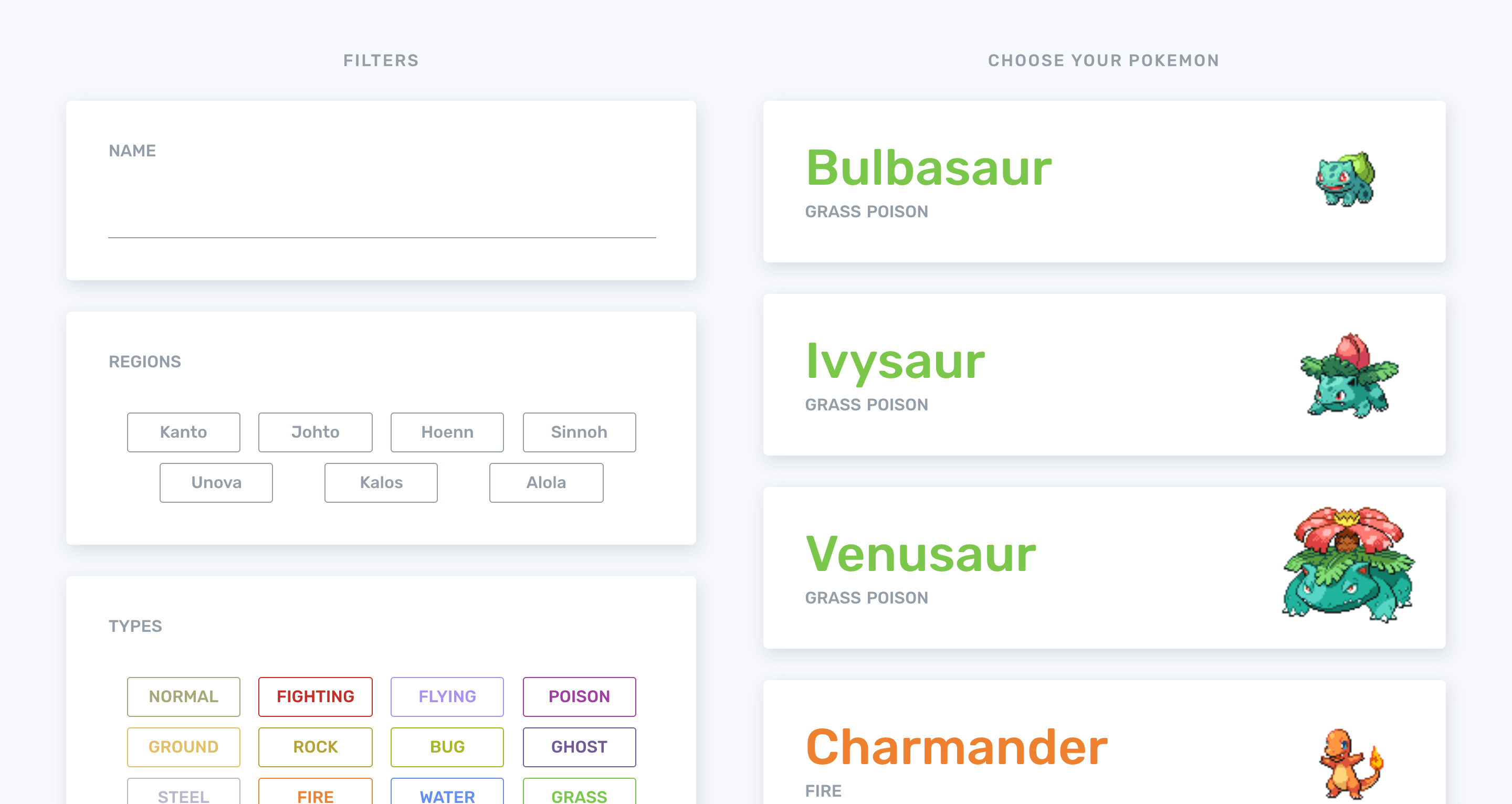Work
React Pokédex
Audience: Open Source
Service: Web Development
Sector: Games
Year: 2019

Official Website •
GitHub
A simple Pokedex probing the PokéAPI.
Background
This was an application I made as part of a screening for the software engineering intern at Immerse, a VR language education platform. The goal of the application was to demonstrate requisite knowledge about interacting with an API, and to be able to talk about design decisions.
Approach
Originally I wanted to make a Pokédex, an in-game enclopedia from Nintendo's IP, Pokémon, after seeing BryanC's design concept of a modern UI for a Pokédex. The detailed information page was out of scope for this application so I decided to forego it to focus on API interaction.
This was to be done in React as an SPA per technical challenge requirements.
Based off the design, I needed the sprite for each Pokemon, a component to hold the species name and evolution-stage type, a component to hold the numerous type filters, a component to hold the region / generation filters, and a component to hold the search input. The filters were designed as controlled or puppeteered components while the search and results could just pull their state from The root component.
I didn't have much experience with http request utility libraries designed to
simplify creation of the XMLHTTPRequest object beyond jQuery at the time and
I wanted to try something new so I ended up picking request. I organized the
HTTP request helper methods around actions that the application would be
responsible for fetching and processing rather than making calls directly from
the components.
Feedback
After getting feedback from the software engineer responsible for the interview process, I was feeling pretty good. One of the things I was able to do well was structure the API. I was suggested to pick up the Axios HTTP request library since it structures it's API request object and creation quite similarly to the way that I had structured mine without it.
I was also recommended to avoid needing binding when passing event handlers down the compnent tree with arrow functions instead. These were practices I readily adopted not having known that these were available options to me at the time - JS was something I was just learning at the time outside of my academic work (which was mostly Python and C++).
Improvements
After the screening for my application and getting the internship, I actually realized I hadn't optimized filtering performance when searching for Pokémon and this was something that bother me quite a bit during development. I ended up returning to this implementation to improve with regex match instead of looping through when looking for regional variants and mega evolutions which were treated as special stages of evolution, I applied a regex to a stringified version of the response to drastically improve performance when using this information to issue subsequent issues to the PokéAPI. This helped reduce the rate at which we would approach the rate limit.
Retrospective Reflection
Looking back, for the time period, I definitely felt like the screening challenge to was intended to force me to utilize some form of an application state library like Redux or utilize the one built-into React at the time which was React context.
Without one, handling the asynchronous nature of request callbacks did prove to be a bit more difficult. The internship itself actually taught me a lot about how to utilize and structure application state so I'm really glad I had the experience of getting the internship.
React ACNL Pattern Tool
Web App, Open Source
LA Hacks Improved
Web App, Open Source